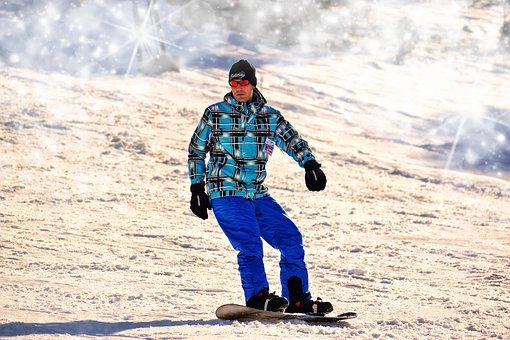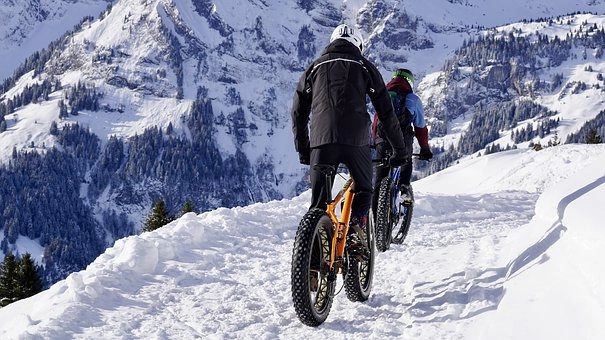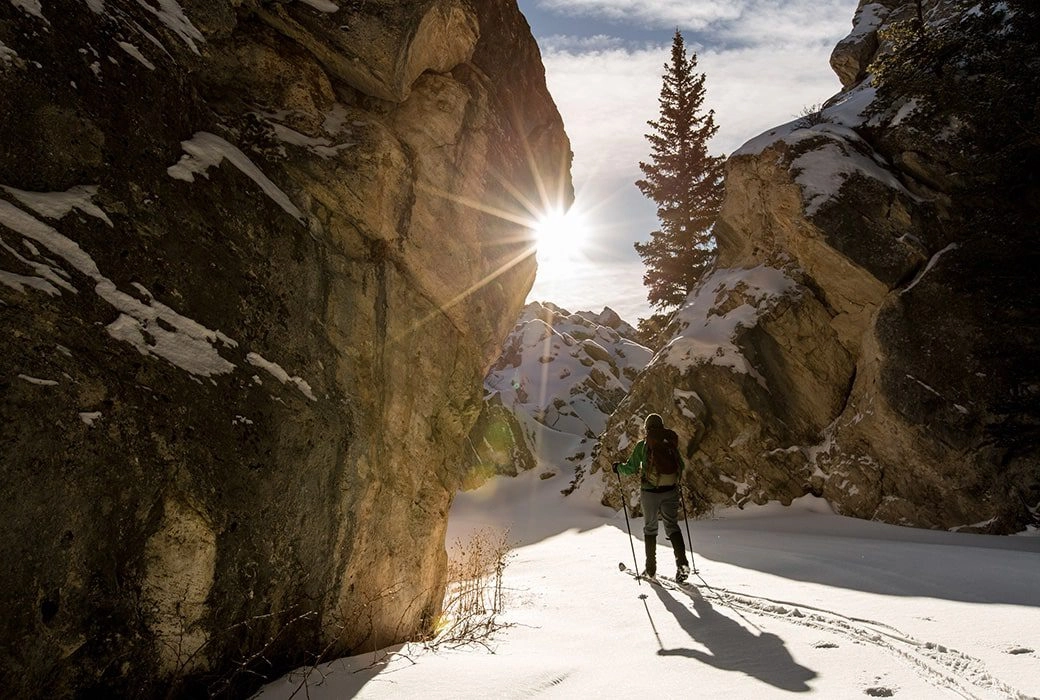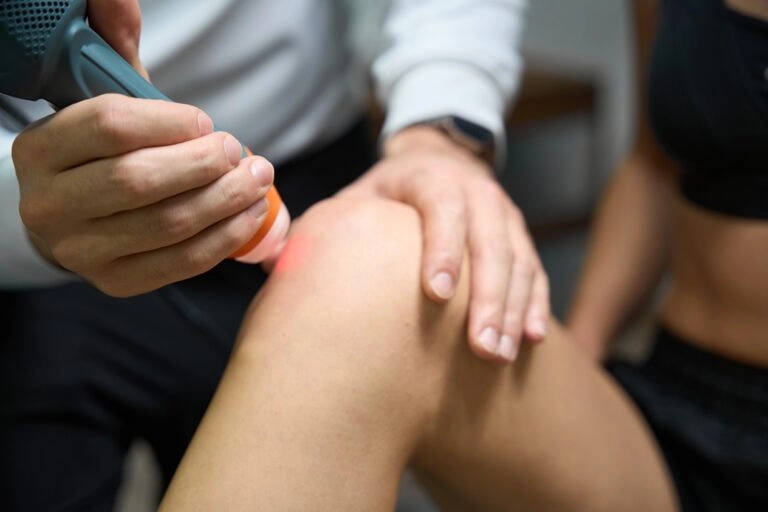If you live in Anchorage, you most likely enjoy some sort of winter sport. Whether it is downhill skiing, snowboarding, snowshoeing, ice hockey, ice skating, or plain old sledding with the kids, winter sports are sure to be a fun time for everyone!
Unless your back hurts. Or you neck starts aching like the dickens. Let’s not forget those aching joints that love to crop up every time the temp’s drop.
Colder temperatures are not just related to achy joints or backaches, but did you know that people tend to injure their backs more often in the winter months than other times of the year? This is because when our muscles and the connective tissue in the body are cold, they become tighter and less flexible. This means that when you jump on that snowboard, you are much more likely to tear a muscle or suffer from a strain or sprain than if you were to jump on a surfboard.
Better Watch Your Back!
Since no one wants to veg out in front of the TV all winter (seriously, how many marathons can you actually watch?!) we want to tell you how you can protect your back no matter which sport you love to indulge in!
Check out these top tips from a chiropractor on how you can protect your back this winter.
If You Love Downhill Skiing-
The excitement of downhill skiing leads thousands to take to the lifts almost every day. Unfortunately, the low temps and speed of this sport can lead to some serious back injuries if you aren’t careful.
The most common injury that comes from skiing is from a fall. This often twists the back and neck into unnatural ways, putting force and stress on the muscles and connective tissue.
While you can’t avoid falling or being hit by another skier, there are steps you can take to minimize injury, including:
- Staying active the entire year. If you are out of shape, the chances that you will strain or sprain your muscles is greatly increased.
- Wear warm clothing in layers. Keeping your muscles as warm as possible before you head down the hill will help prevent injury.
- Learn how to fall. Humans naturally try to self-correct when we fall, which actually makes things worse as far as your muscles go. Try to fall on your behind or on your side and roll.
- Choose your slope wisely. Better to take an easier slope than to risk a serious injury by choosing a slope for more experienced skiers.
- Always check your surroundings. Stay on marked trails and be aware of rocks, trees, and even other skiers so you can avoid tripping or running into others.
If you experience severe low back pain after skiing, you probably have some type of imbalance that is putting extra pressure on your lower back muscles and/or this has pulled your spine out of position. See your chiropractor for a complete evaluation before you return to the slopes.
If You Love Snowboarding-

Snowboarding is another fast-paced sport that many people enjoy, especially the younger crowd. Even for those in their teens and 20’s, however, this sport lends itself to both knee and back pain.
You can avoid most of the injuries that snowboarders suffer by following these tips:
- Stretch your hamstrings! Before you put on your boots, cross your legs as you stand, putting your feet together as close as possible, then try to touch the floor. Switch legs. Just 30 seconds stretching each side will make a huge difference.
- Stretch those quads too! Again, before you put on your boots, stand and bend your leg. Grab your toe with your hand and stretch it back. You don’t have to stretch until it hurts, just stretch until you feel it, then hold that position for a count of 10.
- When using your board to skate to the lifts, put your back leg behind the board, not in front. It feels strange at first, but you become accustomed to this and this simple movement will save your knees (and lower back) by keeping your body properly aligned.
Snowboarding back injuries are common. This sport involves a great deal of twisting and turning, even if you don’t fall! If your back hurts either during or after a snowboarding trip, see your chiropractor as soon as possible.
If You Love Snowshoeing-
Snowshoeing is a terrific way to see the back country and experience nature in a way that many never do. Chances are good that you carry a backpack for supplies as well. This is excellent exercise but can really do a number on your joints.
Try some of the following to avoid injury:
- Consider hiking poles. These improve posture, balance, and lessen the stress placed on your back and joints. Be sure to have the poles adjusted for your height!
- Train at least 4 weeks before the first snows are expected.
- If you do wear a backpack, consider training with a lightly loaded one to prepare your body for this extra weight.
- Choose the right snowshoes. Flat shoes are great for beginners, but for those who love mountain treks, you will need a more rugged type of snowshoe.
- Stretch both before and after your excursion!
If You Love Ice Hockey-
Let’s face it, ice hockey is a rough sport. A great many players end up quitting because they feel pain, tightness, or even weakness in their lower back.
You don’t have to quit, however, if you take the following steps to protect your back:
- Always do warm up exercises. Cold muscles and connective tissue are easier to damage than warm muscles.
- Stretching cannot be overemphasized. You should stretch both before and after a game, practice, and even on days that you aren’t playing.
- Do strengthening exercises all year long.
If you are unsure which stretching and strengthening programs are best for you, or if you are experiencing pain in your back, shoulders, or knees, see your chiropractor.
If You Love Ice Skating-
Ice skating is fun for all ages! This sport never gets old, but the body certainly does!
Back pain is a very common complaint among those who ice skate regularly. You can avoid injury and low back pain with following tips:
- Maintain healthy and strong back and core muscles. Keeping your balance on skates puts a tremendous stress on your lower back. By keeping your core muscles and back muscles strong, you can avoid straining your lower back.
- Stretching is vital! Before you lace up those skates, focus for just 5 minutes on stretching your quad and hamstrings! Stretching these muscles will put less strain on your lower back.
- Poor posture and balance will cause low back strain. If you are new to skating or if you aren’t sure about your form, learn the correct posture and form for ice skating from a professional instructor.
- Keep your leg and core muscles strong all year long!
Ice skating can be so much fun, but it can also cause herniated discs and even stress fractures in the spine. If you are experiencing pain when skating, contact your local chiropractor for an evaluation.
Other Questions for the Chiropractor
Q: Can I Ski with Lower Back Pain?
A: Of course, you could, but why would you? Continuing any activity that causes you pain is only going to bring you more pain. Call us for a same day appointment and stop the pain so you can get back to the slopes!
Q: Skiing with Degenerative Disc Disease- Is This a Bad Idea?
A: You can still go skiing with degenerative disc disease, you will need to take some precautions, however. Consider hiring an instructor that is experienced in showing those with back problems how they can enjoy skiing and reduce the risk of injuring their back. Take a few beginner slopes to warm up your muscles, and don’t take slopes that will really give your back a workout. See your chiropractor regularly to ensure your spine stays in proper alignment.
Q: Why Does My Back Hurt in Cold Weather, No Matter What I am Doing?
A: When the temps drop, the muscles and connective tissue in the back (ligaments and tendons) tighten up. This pulls on the spine and puts a strain on the lower back. This pulling also causes the sensitive nerve roots in the spine to become irritated. If your spine is inflamed, colder weather can lead to swelling, which puts pressure on the spine and leads to pain.
Make an appointment with your local chiropractor so they can do a full evaluation of your spine and help you avoid cold weather-related back pain this winter.
Q: Can Exercising in the Winter Cause Backaches?
A: Yes, and for many of the same reasons listed in the question above. In addition to the tighter muscles, if you start exercising in colder temps without warming up and stretching first, you can easily cause damage to your muscles or tendons, giving yourself a strain or sprain, rather than a good workout. Always warm up and stretch before you begin an exercise program.

We hope you found this article helpful. If you did, please feel free to pass it along via email or social media to others who might also benefit from this information.
If you are experiencing pain when you enjoy winter sports in Anchorage or if you don’t dare think about getting exercise in the winter because of back pain, neck pain, or joint pain, we encourage you to call us for a same day, no obligation appointment. You can also make an appointment online by clicking here.
Our helpful staff will be happy to check your insurance coverage and answer all of your questions. If you don’t have insurance, be sure to read this article.
Don’t hide indoors all winter! Alaska residents deserve to live a full life, free from pain! We have freed more than 6,000 residents from chronic back pain with our Alaska Back Pain Protocol method. Call us today and find out more today!









